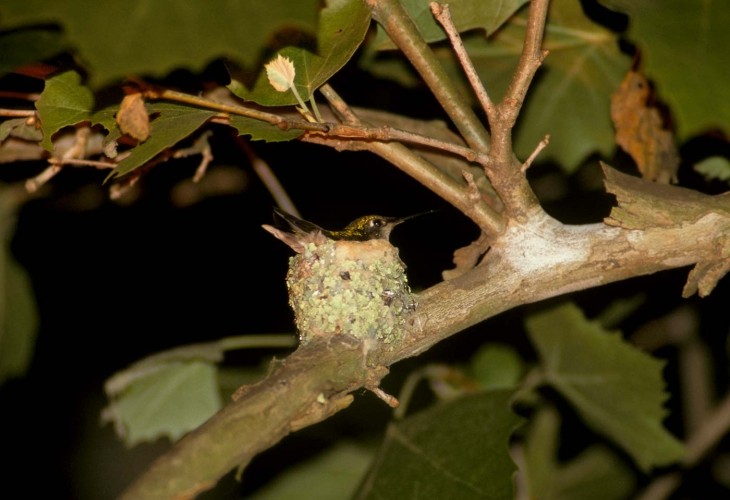
As spring gives way to summer, the crescendo of birdsong in northern forests, shrublands, and fields begins to fade. Procreation replaces territory establishment and courtship, as the vital business of breeding gets underway. Similar to their vocalizations, birds’ nests are fascinatingly diverse, taking an almost endless variety of forms that range from a scrape on the ground to a subterranean burrow, a tree cavity to a rock crevice, a flimsy and primitive twig platform to a sturdy and exquisitely woven hanging cup.
The unifying feature of all avian nests is their essential function as a cradle to safely hold the eggs and, for many species, dependent young during the most vulnerable period of the annual cycle. Protection from predators and adverse weather ultimately dictate the specifics of where, when, and how birds build their nests. Although males and females of most (but not all) species share post-hatching parental duties, females typically assume the tasks of nest site selection, construction, and incubation of eggs.
The locations in which birds – even closely related species – place their nests vary every bit as much as the form and materials used to construct them. “Goatsuckers” such as common nighthawks and eastern whip-poor-wills lay and incubate their eggs on bare ground, with no preparation at all. In contrast, Baltimore orioles position their complex, deeply hanging nests high in deciduous trees, often near the end of a slender, drooping branch. Exterior materials may include plant fibers, bark strips, grapevines, grass, moss or lichen, even yarn or string, while the interior is lined with fine grass, plant down, and/or hair. Pied-billed grebes build nests of aquatic vegetation that literally float on the water, while belted kingfishers excavate burrows up to 8 feet deep in earthen banks. Among ducks, mallards build well-concealed ground nests lined with grasses and their own down feathers, but wood ducks and mergansers use existing tree cavities that can be 60 feet or more above ground.
Flycatchers exemplify the multitude of nest sites and construction materials used by familiar perching birds of the Northeast. Eastern phoebes build bulky, cupped platforms of moss and mud on a human structure or rock ledge. Forest-nesting great crested flycatchers line tree cavities with grasses, twigs, and rootlets (often adding a castoff snake skin as “garnish”). And, eastern kingbirds build open-cup nests of small twigs, plant fibers, bark strips, and plant down, typically in semi-open habitats such as abandoned orchards.
As a rule, nest sizes vary with bulk of the builder. Ruby-throated hummingbird females construct miniature creations of tiny plant fibers, mosses, and spiderwebs, deftly camouflaged on the outside with bits of lichen. Situated atop a horizontal branch, these nests resemble natural knobs, and are exceedingly hard to spot – for both predators and birders. At the opposite extreme, a bald eagle pair may use the same nest for years, annually adding material until it becomes truly gigantic – some reach depths of 20 feet and weigh more than 2 tons. A far cry from the hummingbird’s delicate cup nest, eagle nests are coarse, ungainly collections of large sticks, hardly a pinnacle of avian architecture.
Nests built by birds whose young are wholly dependent on parental care until fledging (called “altricial”) tend to be relatively sturdy and elaborate. Most songbirds fit this category, as nestlings are naked at hatching and incapable of either thermoregulation or self-feeding. The protection afforded by a well-constructed, weather-resistant nest can be the difference between survival and an early demise. In contrast, the young of “precocial” species including waterfowl, grouse, and shorebirds hatch with eyes open and a full complement of down feathers, often leaving the nest within hours. Nests of such species may be very well concealed but tend to be simple in construction, as they play no role in protecting the young.
As architects, engineers, master builders, and artisans, birds have few peers in the animal kingdom. With dazzling diversity and creativity, they have solved the formidable challenges of raising young from eggs. Although the American robin in your lilac, the phoebe under your shed overhang, or the osprey on your favorite lakeside snag may suggest otherwise, most humans never lay eyes on the countless bird nests that surround us each summer. But, when cold winds strip the leaves this fall, look carefully for these small miracles of evolution and beauty.

